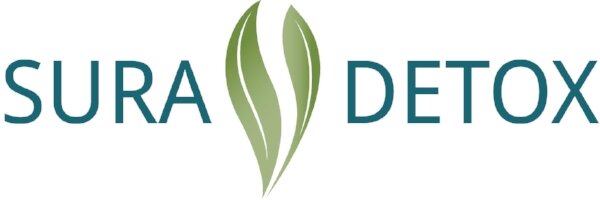Summer Fever
Catching Hay Fever Before it Begins
As it is a common time to start to experience hay fever, but if you treat this condition in its early stages you may not suffer.
Get in there now - IE: spring, rather than full-blown summer, when you are more likely to succumb to short-term pharmaceutical relief.
While hay fever may seem to be about surface symptoms only, it is really a deep-seated immune system issue.
In the case of hay fever, the immune system starts to over-react to harmless substances instead of dealing with the bacteria, viruses and toxins that constantly enter our body.
Stressful Times
This can be a symptom of an immune system that is generally overloaded and stressed. What we all need is a damned good rest - not only from our devices, our family, and our workload, but also from food.
That is why we run detox retreats; the best, fastest, safest, and most effective method for resting all the systems, approved by thousands of years of practitioners, and now modern science is having to agree.
Plenty of recent studies have proven how effective fasting is for rebooting the immune system, causing the body to produce masses of extra clean-up crew to deal with the toxic outpouring.
Lighten Your Diet
Next is to look at the diet itself - how can we provide greater nutrition with less toxic-load.
Much of the foods that we eat, especially cooked and combined in ways that nature never foresaw, lead the body into stress, acidity and toxicity.
Lightening this load is the first step towards any healing.
Commonly prescribed spray and tablets that suppress hay fever symptoms may bring temporary relief but they never get to the root of the problem.
While useful in the short term, they are also associated with many long-term side effects, and do nothing for long term improvement.
Natural Steps for Managing Hay Fever
There are several self help measures that cost very little which you can do yourself to help with hay fever. They are:
1. Drink plenty of water. When you’re well hydrated the mucous membranes of your nose remain moist to expel allergens more easily.
2. Consider using a neti pot.
These small pots can be filled with a warm sea salt solution and used to flush your nasal passages and expel irritants. This is an ancient and highly effective practice for all nasal irritants
3. Coat your nostrils.
Lightly smear a non-absorbent ointment, such as paw-paw ointment, onto the inner surface of your nostrils to provide a protective barrier that traps allergens.
4. Know your triggers.
Most hay fever sufferers are affected by the wind but some are worse indoors while others itch and sneeze when outside. Avoid your triggers when pollen counts are high.
Use Food as your Medicine.
Fats
Healthy fats and oils such as olive oil, fish oil and even moderate amounts of animal fats are important for a healthy immune system.
Studies show that those who eat mostly polyunsaturated and trans-fats, as found in many margarines and processed foods, are more likely to suffer allergies.
Onions & Garlic
The symptoms they cause, they can also treat. Both contain natural compounds that reduce the inflammation of hay fever.
Add them liberally to your meals or, if you are up to it, eat them by themselves to reduce nasal irritation and streaming eyes.
Honey
Local, raw honey can be used as a crude form of homoeopathy to de-sensitise yourself to local pollens from which the honey was produced. Start by taking a small amount each day before the start of hay fever season, gradually increasing to a teaspoon or more. Continue right through the season for best results.
Spices
Spices such as horseradish, mustard, chillies and fenugreek also help through a crude homeopathic effect – they can relieve the very hay fever-like symptoms they produce, probably by irritating the mucus membranes themselves, stimulating them to shed greater irritants, like pollen.
Add them liberally to meals or take them alone to thin mucus and expel irritants.
Nettles
Up for another title, alongside one of the most abundant, and commonly ignored, highly nutritious, local plants. Something to do with how the body reacts against their stinging poisons which lowers the histamine in the blood, thus relieving hay fever (we think - despite numerous studies, no one is quite sure yet !
But while we are celebrating nettles, I'll just add that their sting is delivered via little glass tubes that actually break off in the skin, sending its formic acid into the body via capillary action alone - evil genius !
But you don't need to get spiked - put a few nettle tops into a teapot to steep for a few minutes and drink the pleasantly earthy brew.
Or wilt a 20 nettle tops (the top two sets of leaves and stalk) into soup for 5 minutes once you have finished cooking it.
It's especially gorgeous if you then drain off some liquid and add a tin of coconut milk and blend the whole thing - proper winter yumminess.
Evidence
Could stinging nettles cure hay fever? by Peta Bee in The Times : Published June 26 2018, 12:01am
Efficacy of Supportive Therapy of Allergic Rhinitis by Stinging Nettle (Urtica dioica) root extract: a Randomized, Double-Blind, Placebo- Controlled, Clinical Trial by Mehdi Bakhshaee, Amir Hooshang Mohammad pour, Majid Esmaeili, Farahzad Jabbari Azad, Ghazal Alipour Talesh, Maryam Salehi, and Morteza Noorollahian Mohajer in Iran J Pharm Res. 2017 Winter; 16(Suppl): 112–118.
Phytother Res. 2009 Jul;23(7):920-6. doi: 10.1002/ptr.2763.
Nettle extract (Urtica dioica) affects key receptors and enzymes associated with allergic rhinitis. by Roschek B Jr, Fink RC, McMichael M, Alberte RS. in PubMed.gov













